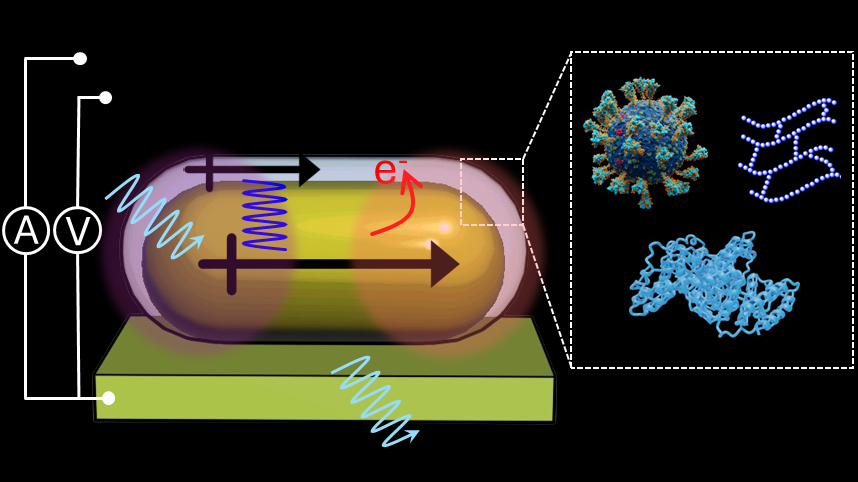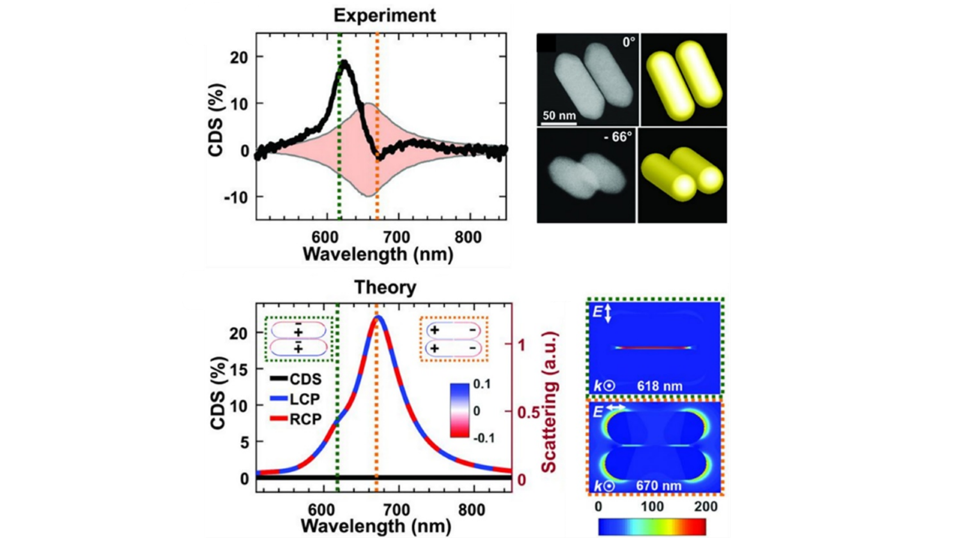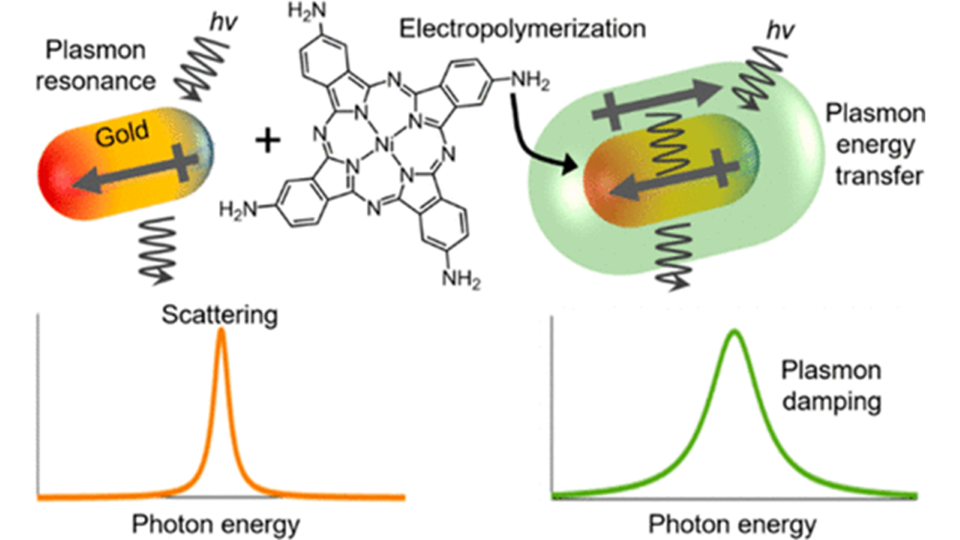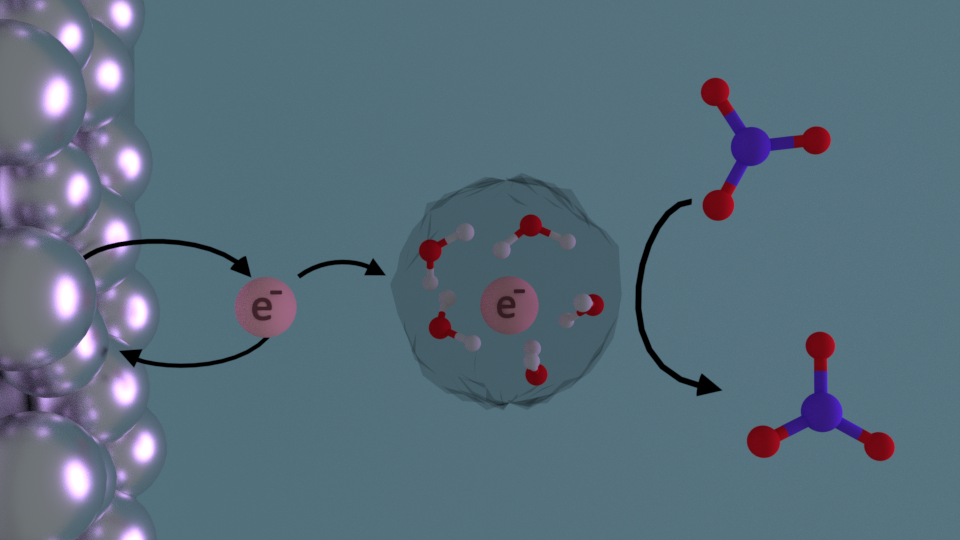
The plasmon interacts with its molecular environment both as a donor of charge and energy as well as an antenna that acts as a sensor or amplifies spectroscopic signals. Molecular signals can be enhanced enough to enable the detection of single molecules, while the plasmon itself is sensitive to follow electrochemical charging, changes in adsorbed ions, and redox chemistry. Achieving significant mechanistic insights into the interactions at the plasmonic-soft materials interface that drives efficient local (electro-)chemistry or sensing performance, requires a single-particle approach though to eliminate inhomogeneous averaging due to different nanostructure geometries n.
To address the limitations of ensemble spectroscopy, the Link Research Group is employing and developing novel spectro-electrochemical methods to follow energy transfer at the interface of plasmonic-polymeric heterostructures as well as charge injection of electrons into the surrounding solvent. The overall goal is to achieve mechanistic insights into the principles governing efficient and selective plasmon-enhanced redox chemistry at soft interfaces. These sensing studies also extend to soft interfaces with proteins bound to the nanoparticle surface forming a protein corona that we aim to characterize using the plasmon as a sensitive read-out of binding or conformation. Our current emphasis is on the following topics: Plasmon-coupled circular dichroism, Single-particle spectro-electrochemistry, and Plasmon-enhanced solvated electron generations.

Plasmon-coupled circular dichroism
Sensitive detection of chirality holds great importance in the realm of drug development as the chiral configuration of a biomolecule significantly influences its molecular recognition and, consequently, its functionality.

Single-particle spectro-electrochemistry
One challenging aspect of extracting energy through the localized surface plasmon resonance of a nanoparticle is achieving high efficiency and deciphering mechanistic principles that govern the reaction pathway.

Plasmon-enhanced solvated electron generation
Energetic carriers can be generated from plasmon decay at the metal interface. However, effectively harnessing these hot carriers presents a significant challenge.